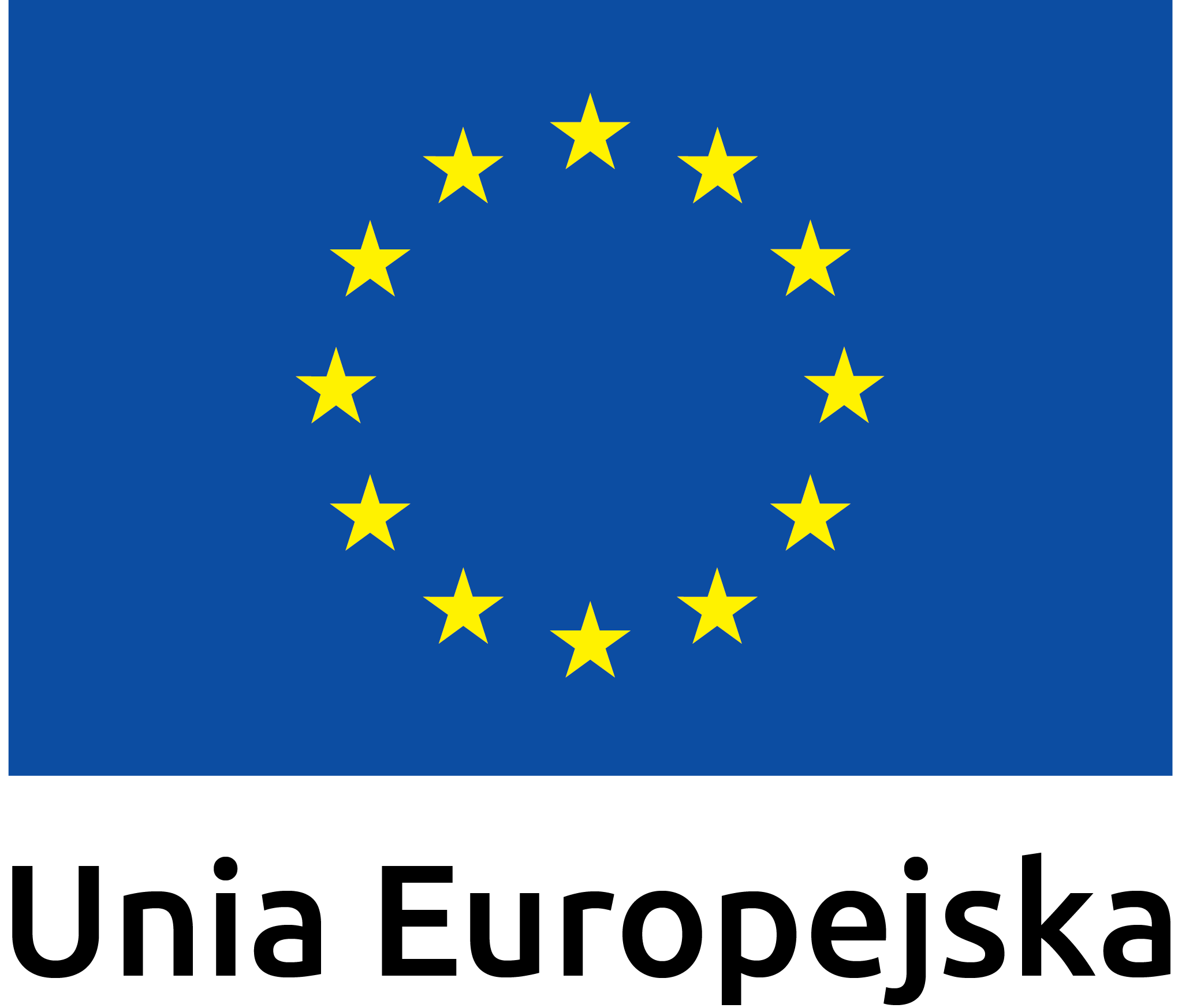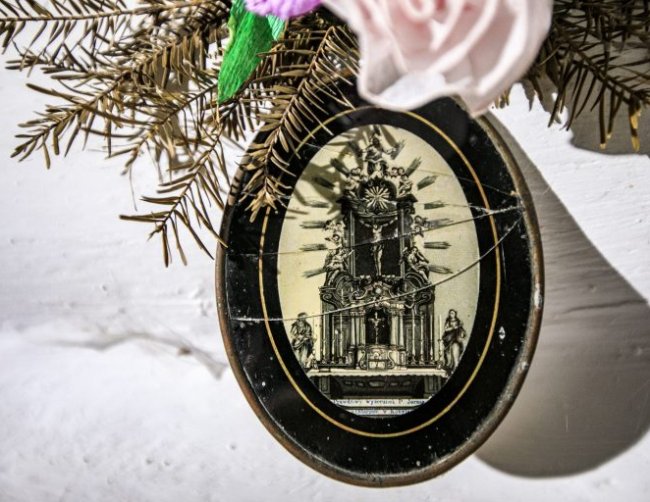Object
Devotional picture "Souvenir from Kobylanka"
Information
Copyright classification
https://pl.wikipedia.org/wiki/Domena_publiczna
Description
In a small pauper's cottage in the foothill village of Lipnica Wielka, designed as a village herbalist's house, one notices a row of holy paintings above the window and on the wall opposite the entrance. On the right side, slightly to the side, there is a small, oval picture. If you come closer, you can see that it is a black and white representation of a baroque altar with the image of the Crucifixion. At the bottom there is a rather difficult to read signature (original spelling): "A real appearance of Jesus / with the Altar in Kobyla [nce]". This small representation in a glass oval is therefore associated with the Kobyl sanctuary - perhaps it is a souvenir of a pilgrimage to this place of worship.
Kobylanka is a village located approximately 5 km east of Gorlice, among the gentle hills of the Gorlice Depression, in the area inhabited by the ethnographic group of Western Foothills. The known history of the village dates back to the 14th century. In 1680, the then owner of Kobylanka, Count Jan Wielopolski, went on a trip to Rome. There, as a token of gratitude for his services to the Church, he received from Pope Innocent XI a copy of the Vatican painting of the Lord Jesus Crucified. After the count's return to Poland, the painting was placed in the chapel of the Wielopolski manor in Kobylanka. According to records, on December 7, 1681, during vespers celebrated by the Reformed Fathers from nearby Biecz, a great brightness appeared over the chapel, the source of which was this image. On the day of Pentecost in 1682, the painting was moved to the parish church. People praying before him began to experience many graces, including miraculous healings. At the beginning of the 18th century, in the years 1709 - 1712, Małopolska and Podkarpacie were hit by an extremely dangerous plague epidemic. According to legend, the owner of the Gorlice manor had a prophetic dream telling how to protect Gorlice from disease. The plague was supposed to end if innocent girls who were baptized with the name Maria - in memory of Our Lady - went around the parish boundaries in procession, begging for God's mercy and singing Marian songs. This is what happened - girls dressed in white in veils and with lamps in their hands walked around the borders of the Gorlice parish, ending the pilgrimage in front of the image of Jesus Crucified in Kobylanka. The epidemic in Gorlice ended, and in commemoration of this event, the tradition of the Virgin Mary in Gorlice is maintained to this day, and they participate in the annual procession on December 8, the feast of the Immaculate Conception of the Blessed Virgin Mary. Stopping the plague is just one of the miracles that people experienced while praying in front of the Kobyl image. Based on the collected testimonies, the painting was declared miraculous by decree of the Bishop of Krakow in 1728. During the partition period, Kobylanka became one of the most important sanctuaries in Galicia. Pilgrimages came there even from the areas of today's Slovakia and Hungary. The current church in Kobylanka, late baroque, dedicated to Saint John the Baptist, was built in 1720 and consecrated in 1750. Since 1930, the sanctuary has been under the care of the Congregation of the La Salette Missionary Priests.
It is worth noting that although the painting "Souvenir from Kobylanka" is exhibited in a cottage from Lipnica in the Podgórze region, this item was acquired for the museum collection in the village of Gostwica, located near Podegrodzie, approximately 10 km southwest of Nowy Sącz. Ethnographically, it is an area inhabited by the Lachy Sądecki family. Today it is no longer known how the picture ended up in Gostwica. It could have been brought as a souvenir from a stay in the sanctuary by a villager, or it could have been, for example, given as a gift by another person who was there. Whatever the case, it is one of many paintings related to various sanctuaries that can be found on the exhibition of the Nowy Sącz open-air museum. They are testimony to the important role that sanctuaries and pilgrimages played in traditional rural culture. It should be noted that these images were not necessarily acquired during pilgrimages - sometimes, especially in the case of the most famous sanctuaries, such images were widely disseminated, reproduced in various ways, easily accessible and permanently embedded in folk religiosity. Perhaps the most famous example is the image of Our Lady of Częstochowa. The paintings in the open-air museum most often come from the sanctuaries of Lesser Poland - the closest ones, located in the Sądecczyzna region and the adjacent areas, as well as those further away, known to pilgrims from all over Poland and abroad. Examples of representations related to the former include frequently encountered images of Our Lady of Wojakowa (reproduction of the painting from the church of Our Lady of the Assumption in Wojakowa in the Brzeg district, Iwkowa commune), Our Lady of Tuchów, reproductions of the image of the Transfiguration of the Lord from the Basilica of St. Margaret in Nowy Sącz, Our Lady of Consolation (sanctuary of Our Lady of Consolation in the Church of the Holy Spirit at the Jesuit monastery in Nowy Sącz). Examples of images related to further sanctuaries, those commonly known, but also those enjoying only a local cult, are the previously mentioned images of Our Lady of Częstochowa, images of various content from Kalwaria Zebrzydowska (e.g. the frequently encountered Our Lady of Kalwaria), but also, for example, the image of Our Lady of Sorrows from the Franciscan monastery in Krakow, the image of the Transfiguration of the Lord from Cmolas near Kolbuszowa in Podkarpacie, Our Lady of Bronowska (Bronowice) - a reproduction of the painting painted by Włodzimierz Tetmajer and located in the Franciscan church in Bronowice Wielkie near Krakow.
Bogusława Błażewicz

